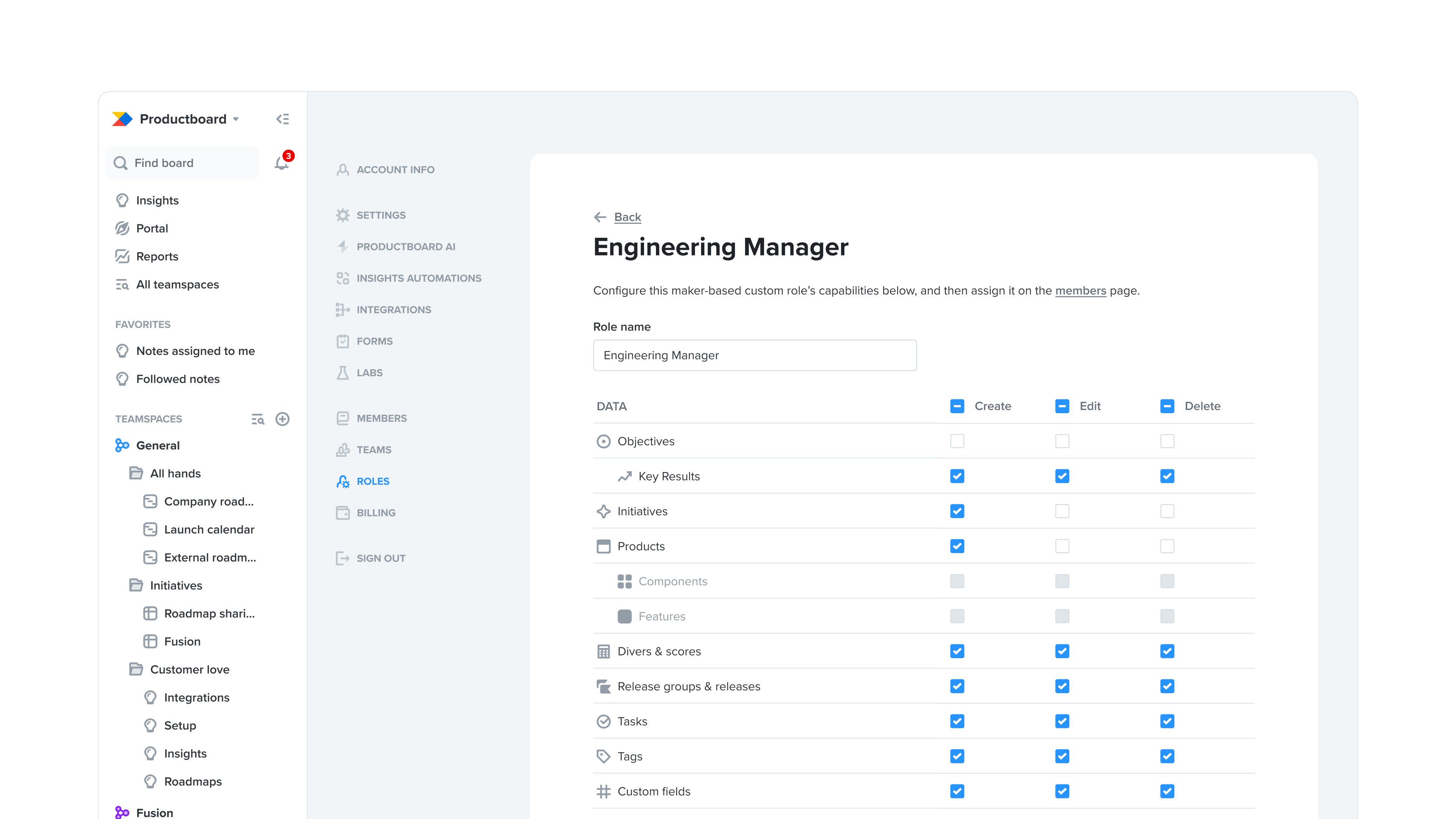Productboard is now even better for entire product organizations
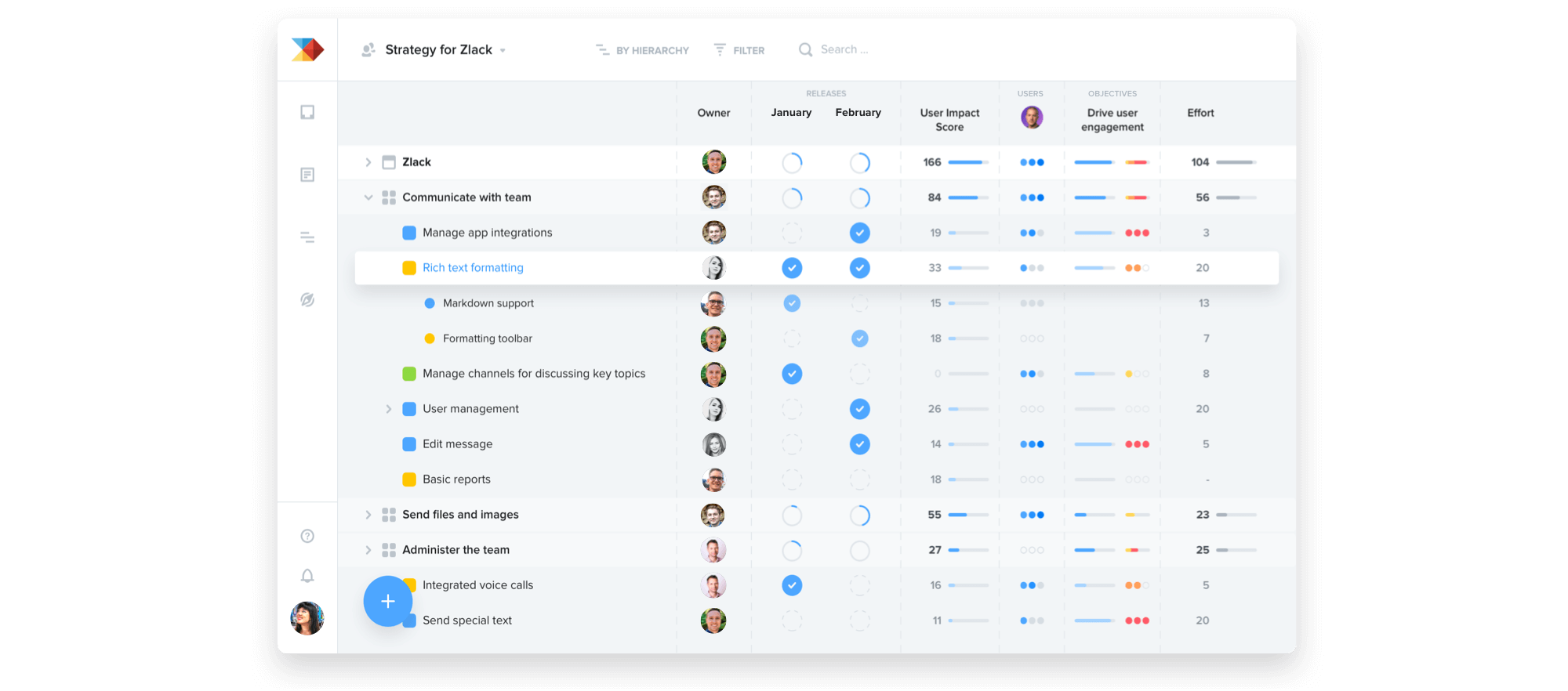
Have you been waiting for the right excuse to get your fellow product manager colleagues using Productboard? Want to ensure your product organization is benefiting from all the functionality introduced in 2019? As we turn the page on a new year, and new decade, there’s never been a better time to step back, reflect, and fine-tune the system that supports all your product processes. Let’s take a walk through all the latest features (and others coming soon!) that will help your teams make products that matter, together.
A true product management system
productboard is now optimized for many product managers to prioritize out of the same workspace. It means you can always zoom out for the big picture, and search across all user insights, see feature ideas spanning all products, or view a roadmap for the whole product portfolio. Yet day to day, it’s easy for each product manager to focus on just the product data that relates to their work.
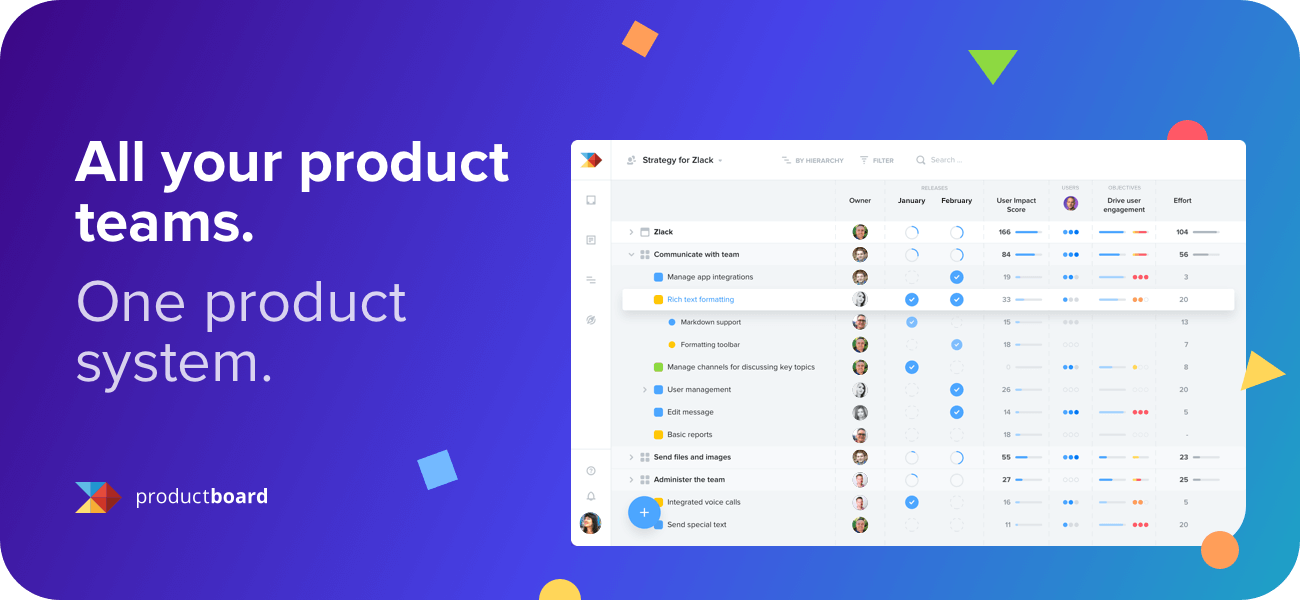
Flexible product hierarchy
Earlier this year we made the product hierarchy even more flexible for organizing your feature ideas. Whether you’re using components to represent areas of the product, user needs, or technical components, you can nest them multiple levels deep to keep backlogs for more complex products manageable and organized.
Break larger feature ideas down into subfeatures to substantiate your ideas, capture user stories you’ll address, or get a head start on planning what you’ll deliver. (Or roll small ideas up into something bigger!)
https://www.productboard.wistia.com/medias/1m5lzek8gx
The beauty of the Features board is you can zoom out for a holistic view of all ideas across all products, or filter for the features that matter most to you and create a saved view you can share with others and return to at any time.
More info: Capture and organize your feature ideas
See your prioritization criteria, not your colleague’s
productboard allows you to add many types of data fields to your Features board to support prioritization and planning. Some fields may represent common criteria or release schedules that should be standardized across all products. Others may be specific to individual products and those who manage them. That’s why now, you have the ability to associate each data field with specific products.
Associate fields with products
Now, when you create a new product, you’re prompted to indicate which existing fields should be associated with it (and available for scoring underlying features).
These settings can also be updated for existing products and fields.
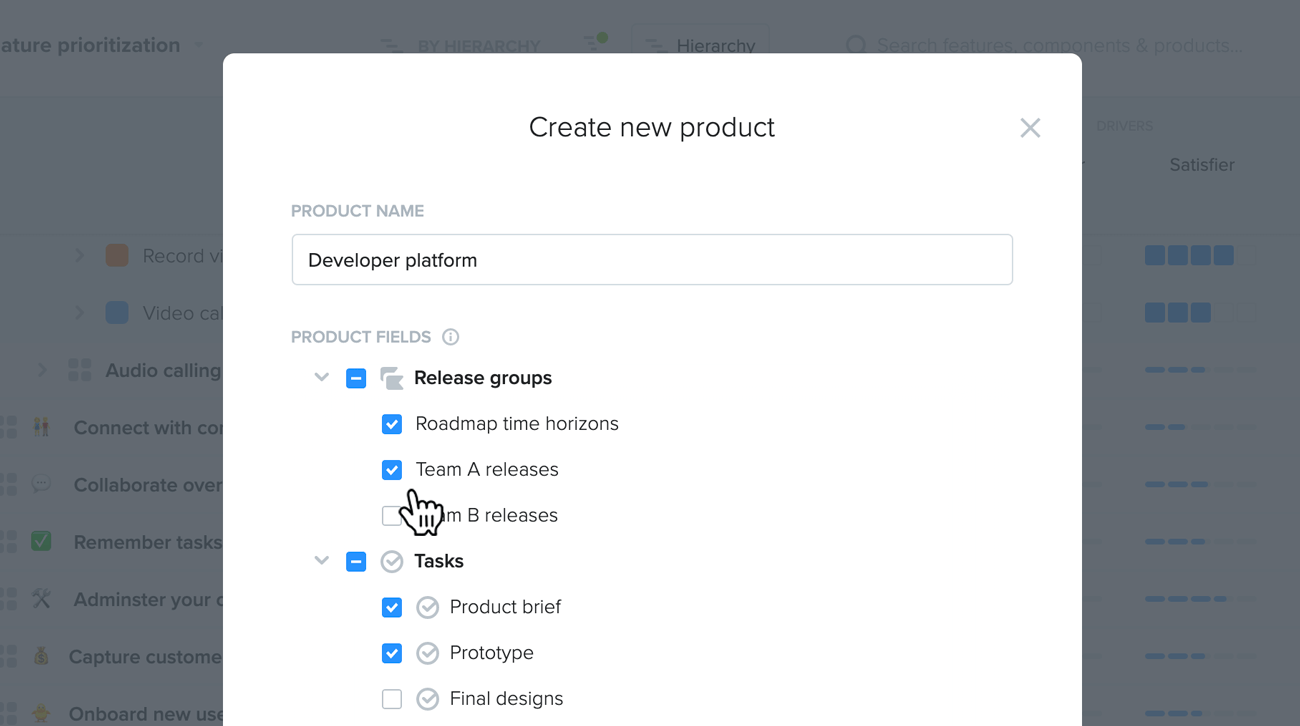
Focus on the data that matters most to you:
- In the field configurations side pane, you’ll only see fields associated with the current products (filtered onto your board).
- In a feature’s details side pane, you’ll only see those fields associated with that feature’s product.
Fields that can be associated with a product:
- Release groups
- Drivers
- Custom fields
- Prioritization scores
- Tasks (including those associated with integrations)
This feature is available on the Enterprise plan.
More info: Associate fields with products
Multiple Portals
It’s now possible to create multiple Portals in the same productboard workspace — one for each product or customer segment. You could also create a separate Portal just for internal stakeholders, so they can vote on a more comprehensive set of ideas.
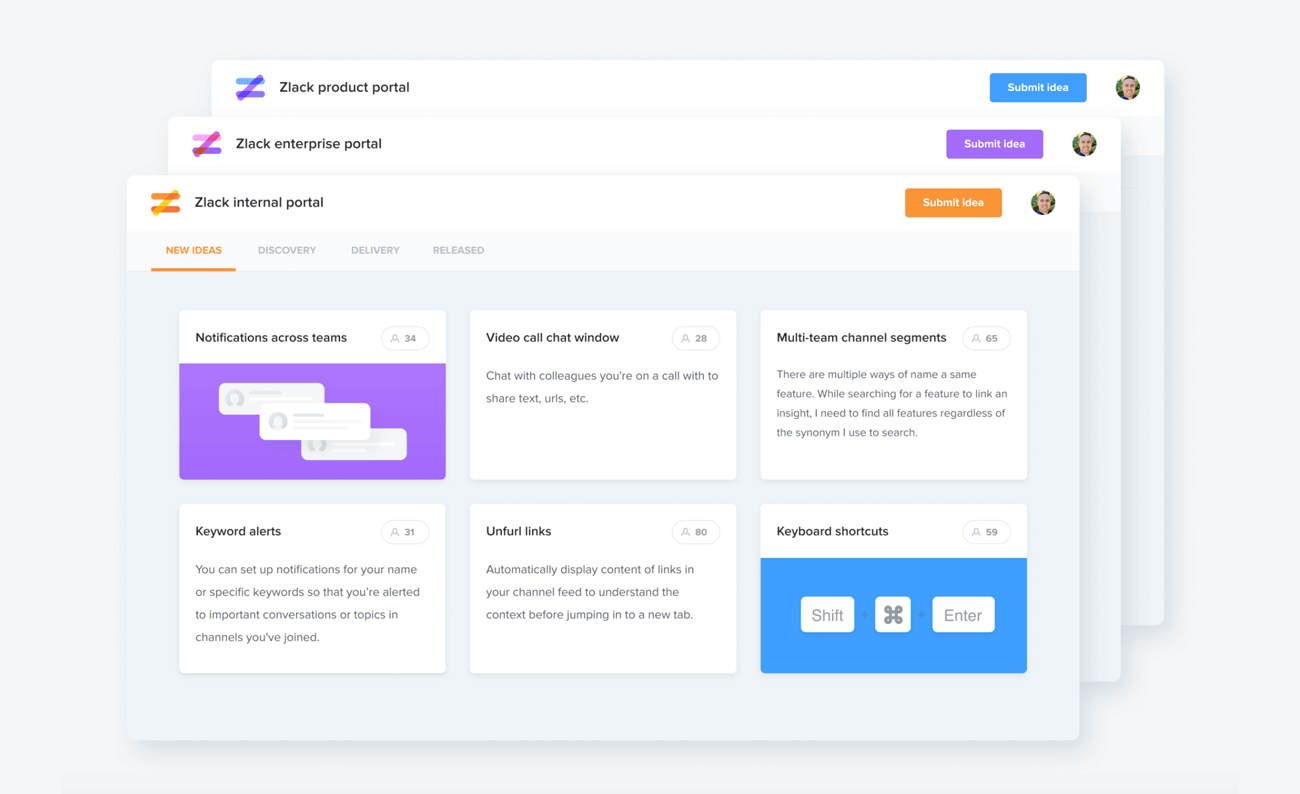
The same feature, subfeature, or component can be added to multiple Portals and reside on different tabs/sections within each, but the contents of its Portal card (name, description, image) will remain in sync across all Portals.
This feature is available on the Team plan and above.
More info: Use the Portal to share your plans and collect feedback at scale
Create multiple release groups
Create multiple release groups to manage different teams’ release schedules. Or use one set of releases for granular planning, and another for high-level time horizons on your Roadmap.
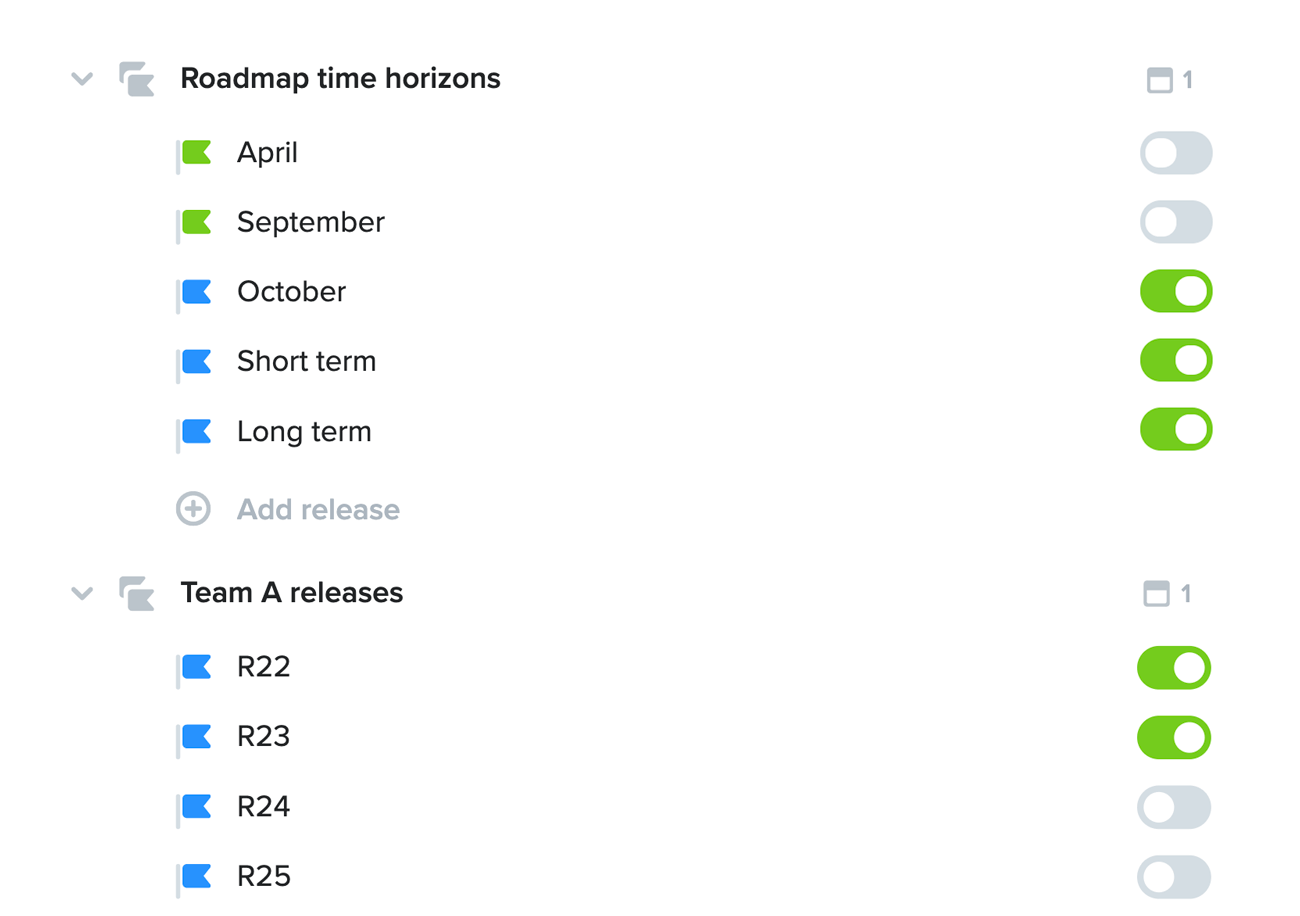
Some release groups may be assigned to a specific product, while others may span all products.
This feature is available on the Enterprise plan.
More info: Plan releases to decide what to deliver when
A centralized product hub that benefits everyone
With the latest updates, productboard is no longer just for product managers, or even members of the delivery team. Everyone across the organization benefits from a product management system where they can submit insights to inform the product’s direction and check in to see where the product is headed next.
Custom field sharing settings
In addition to associating fields with specific products, you can also customize their sharing settings to keep a field private, or share it only with certain roles. This could be helpful for keeping sensitive data private, or to avoid revealing tentative plans until you’re ready.
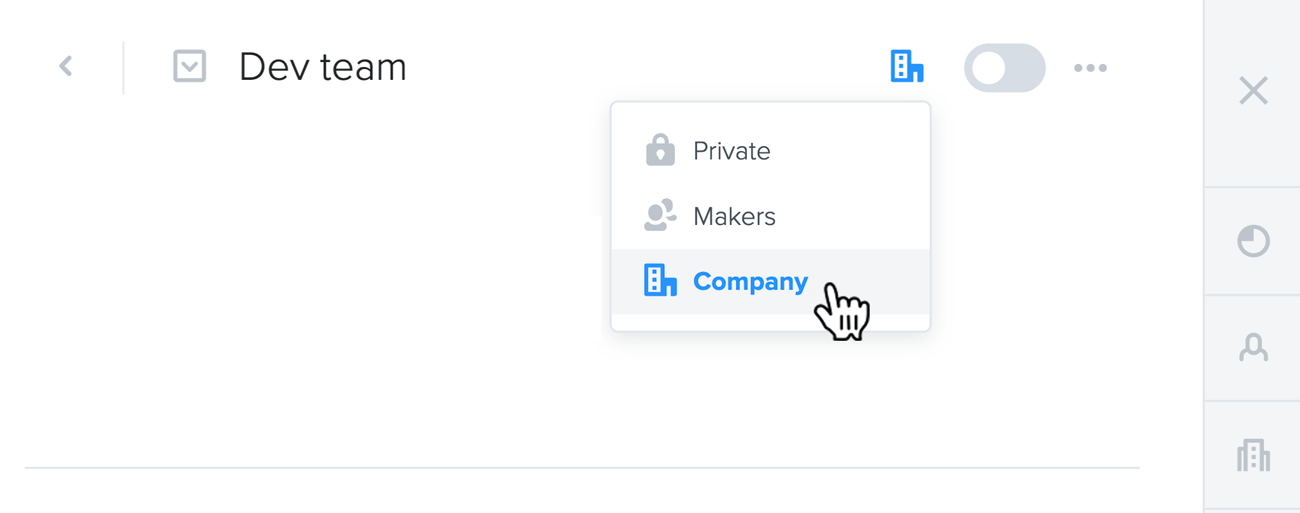
This feature is available on the Enterprise plan.
More info: Customize field sharing settings
Saved view sharing settings
When you create a saved view of your board it’s private by default, but can be shared with other makers, or with contributors as well. You can also share saved views with individual colleagues (and soon, all members of a team, a specified group of members in productboard.)
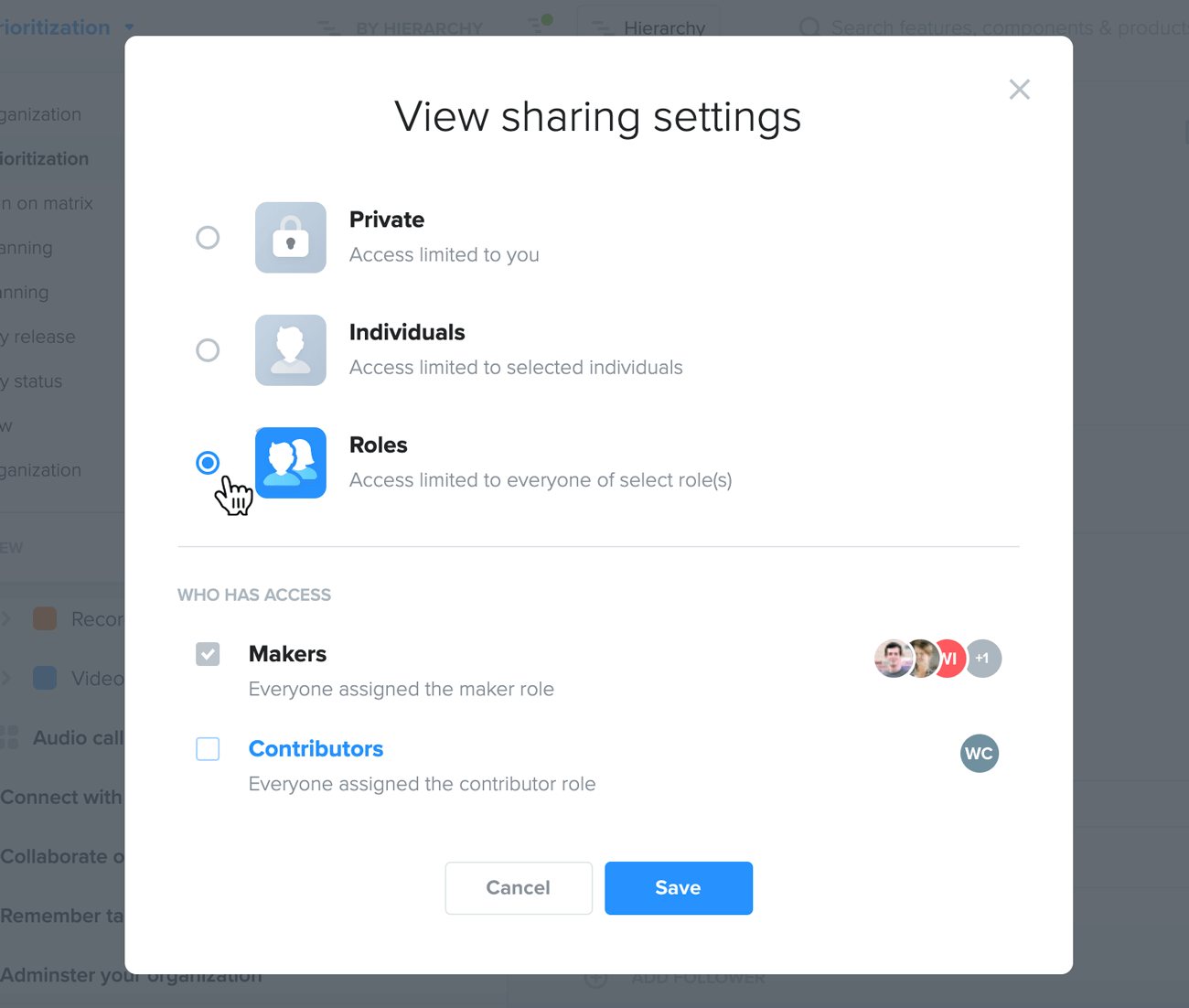
This feature is available on the Team plan and above.
More info: Use saved views to capture common Features board configurations
Project member custom field
New project member custom fields allow you to track other types of colleagues who may be involved with each feature (e.g. designers, developers, marketers, technical writers).
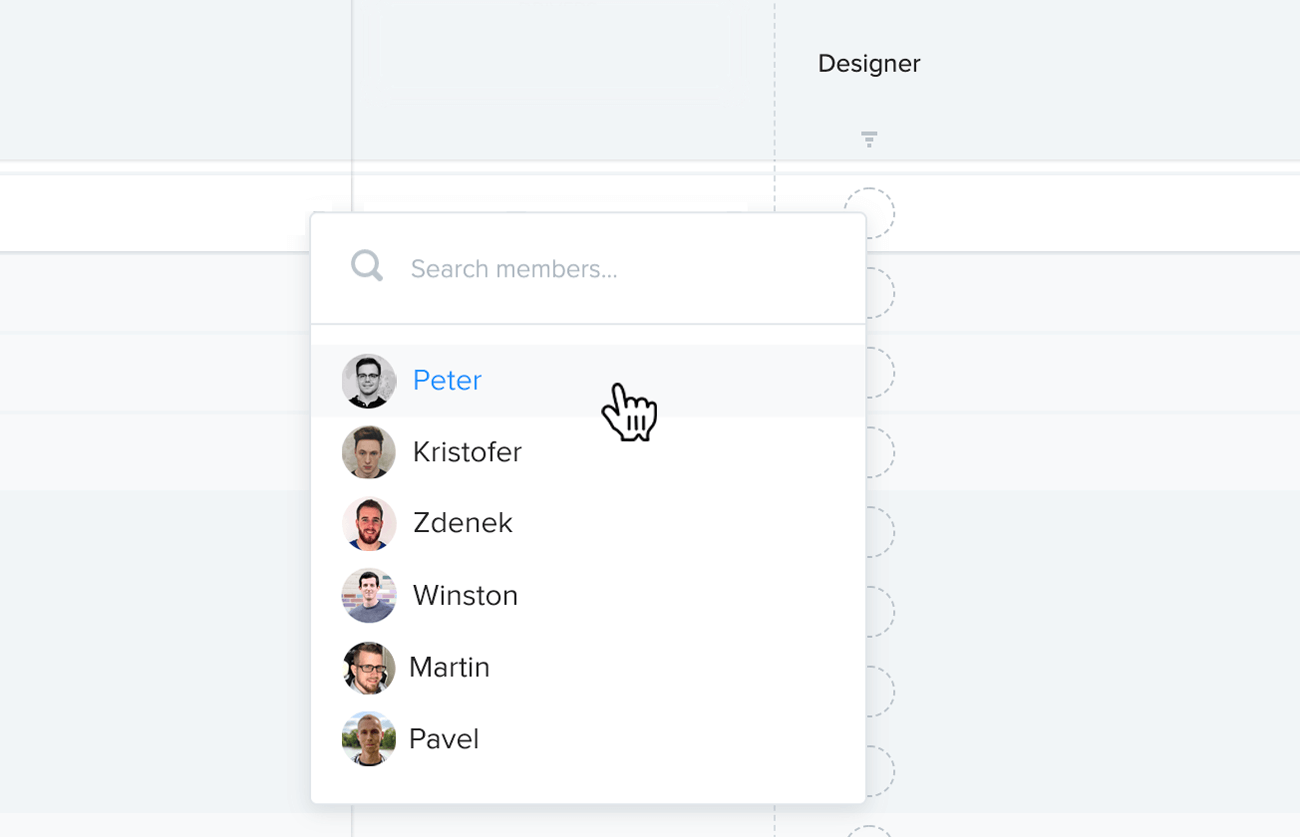
This feature is available on the Team plan and above.
More info: Add custom fields to your boards
Internal Portal
As introduced above, you can now create a separate Portal for internal use, which allows you to display a more comprehensive set of feature ideas under consideration than you’re ready to share with customers or the public.
When contributors access the Portal from within the productboard application (as opposed to the Portal sharing link provided to end users), they’ll even be able to provide feedback on behalf of particular customers. This is helpful for the product team, since understanding who has some need is a big part of understanding the need itself.
The Portal is available on all plans. Multiple Portals is available on the Team plan and above.
Teams (Coming soon!)
You’ll soon be able to group workspace members into teams, which will be helpful for further customizing access settings, as well as tracking ownership (assign objectives/features to teams), and facilitating communication (team @mentions).
More insights to inform product decisions
With hundreds of user insights and product requests arriving from colleagues and customers every day, established organizations need a way to efficiently process it all to better inform prioritization decisions. productboard now offers a personal inbox (in addition to the shared team inbox) so each product manager can see all the notes they own and are responsible for processing.
More info: Processing notes efficiently
New Gainsight integration
A new Gainsight integration allows you to easily route feature requests submitted from an in-app widget into productboard.

More info: Integrate with Gainsight
Additional Insights enhancements coming soon
A public API will allow anyone to integrate with many new sources to get insights into productboard. (This will also expedite the process for us to build new native integrations.)
Filter enhancements on the Insights board will support filtering by many new attributes.
The ability to define saved views on your Insights board called “Collections” containing filtered sets of notes (e.g. Team A’s notes, VIP customer notes…)
Forthcoming enhancements will allow you to set up separate inboxes for each of your products as well as define rule-based automations for routing notes to the right place.
Objectives for focus and accountability
“It is not because a feature belongs to some theme that we decide to build it, but because it will help us reach our current objective. So that is how we prioritize, and that is how we share our plans.” — Hubert Palan, founder & CEO, productboard
Modern product-led organizations define clear, measurable objectives that support the company’s goals. productboard now supports more robust prioritization workflows for prioritizing features by objective.
Prioritizing with objectives
Think of objectives like initiatives that are defined around a clear outcome to be achieved over some time horizon.
They offer a more robust prioritization workflow than drivers, can be assigned a status (upcoming, in progress, completed), can be visualized on the Prioritization matrix (see below), and used to group features on the Roadmap.

Steps for using objectives in productboard:
- Add features to an objective to group features that support the same strategic goals.
- Score features value toward achieving an objective.
- Consider value, effort, and other factors to decide each feature’s final priority within an objective.
- Sort/filter your Features board by objective or by objective value/score/priority.
- Visualize your Roadmap with objective swimlanes to communicate the why behind every feature idea.
More info:
The Prioritization matrix
The interactive Prioritization matrix is a grouping option on the Features board that lets you zero in on one objective at a time and visualize the value/effort tradeoff across all its features. It makes it easy to spot low-hanging fruit features (high-value, low-cost).
This feature is available on the Team plan and above.
More info: Using the Prioritization matrix
New timeline-based strategic roadmap (coming soon)
Even for Agile teams, external time-based deadlines and milestones, and your teams’ capacity, can impact which objectives you decide to tackle first. The new timeline-based roadmap allows you to map objectives and other entities (including generic placeholders) against a timeline. This helps for high-level planning and what-if analysis as you visualize different contingencies.
Closing the feedback loop
Portal card updates
Larger product organizations at more established companies must keep customers in the loop. But how can you do this efficiently as your customer base grows and user needs become more complex? Portal card updates can help. They allow you to post an update to any Portal card that can also be emailed out to all who requested the feature (or provided an insight that was linked to it).
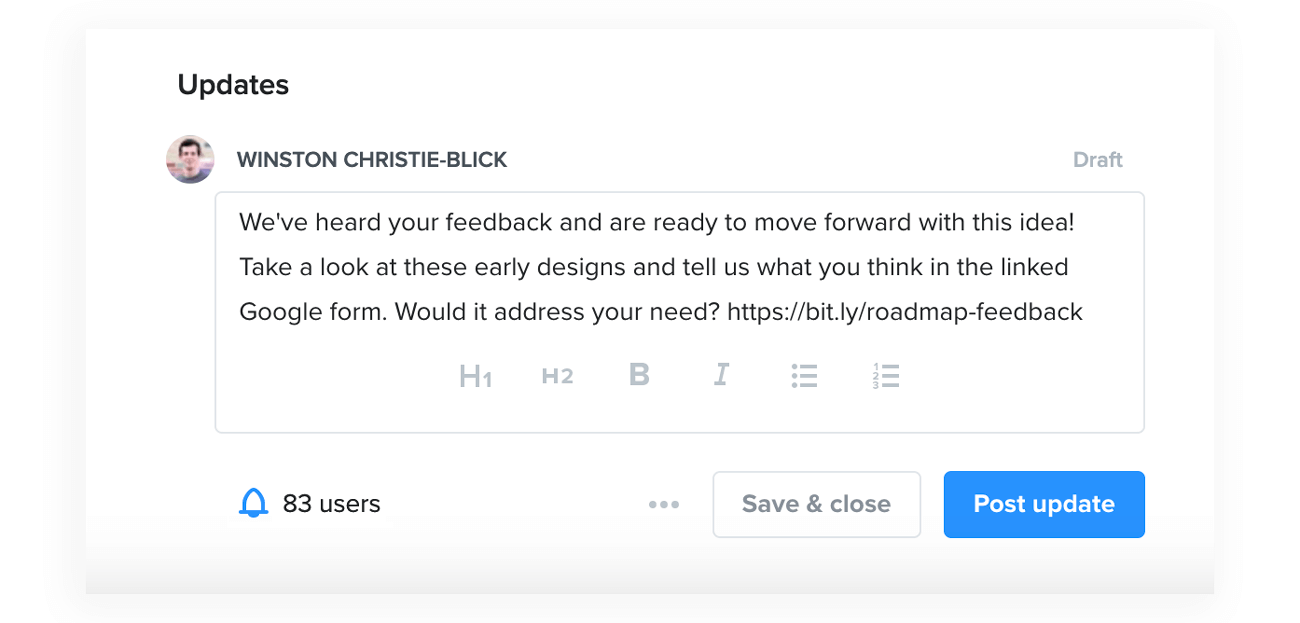
More info: Close the feedback loop with Portal card updates
Where we’re headed in 2020
On productboard’s own roadmap — shared publicly on a productboard Portal — are additional features slated for early 2020 that will continue delivering on the same vision of a unified product management system built on Product Excellence best practices.
This includes a public API for routing product ideas, requests, and feedback from many new sources into productboard, as well as enhanced functionality for efficiently processing all those inputs to inform product prioritization. A new type of time-based strategic roadmap is currently in progress. Enabling prioritization around the needs of distinct user segments will also be a priority.
Thank you for being on this journey with us! It's an honor to be making products that matter, together.
Want to learn more about our Enterprise plan that allows all your product teams to collaborate in one product system? Send us a chat or email us at [email protected].
Not yet a productboard customer? Returning after a break? Start a new trial today!




